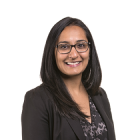Hours
| Day | Open | Close |
|---|---|---|
| Monday | 8:00 AM | 5:00 PM |
| Tuesday | 8:00 AM | 5:00 PM |
| Wednesday | 8:00 AM | 7:00 PM |
| Thursday | 8:00 AM | 5:00 PM |
| Friday | 8:00 AM | 5:00 PM |
| Saturday | CLOSED | CLOSED |
| Sunday | CLOSED | CLOSED |
About this location
Choosing the right eye care provider is critical to maintaining your vision health. That's why, at FYidoctors New Westminster, our team of experienced optometrists in New Westminster are dedicated to providing exceptional care and personalized attention to each of our patients. We offer a variety of services, including comprehensive eye exam, prescription glasses, sunglasses, prescription lenses, contact lens fittings, and other optometric services designed to help you achieve and maintain optimal vision. We understand that selecting the perfect eyewear can be challenging, which is why our team of optometrists is committed to guiding you through the process. They will work with you to determine the best contact lenses for your unique needs and lifestyle. We use the latest technology and techniques to provide accurate diagnoses and develop customized treatment plans tailored to your individual needs, whether you require a routine eye exam or have a specific eye condition. Book an appointment with our eye doctors in New Westminster today and experience the difference that personalized vision care and advanced technology can make in your eye health.
Our Optometrists

Shainul Waljee
Lorem ipsum dolor sit amet, consectetur adipiscing elit, sed do eiusmod tempor incididunt ut labore et dolore magna aliqua. Ut enim ad minim veniam, quis nostrud.

Jennifer Durst
Lorem ipsum dolor sit amet, consectetur adipiscing elit, sed do eiusmod tempor incididunt ut labore et dolore magna aliqua. Ut enim ad minim veniam, quis nostrud.

Liseann Head
Lorem ipsum dolor sit amet, consectetur adipiscing elit, sed do eiusmod tempor incididunt ut labore et dolore magna aliqua. Ut enim ad minim veniam, quis nostrud.

